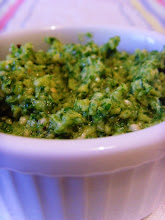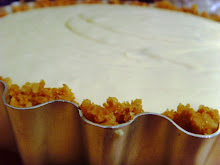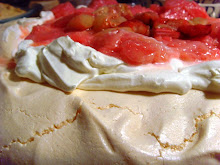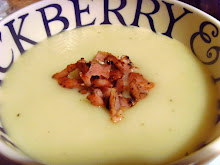Like her or not, almost everyone has something to say about Nigella. Men I know who are usually uninterested by cookery are almost all enthusiastically appreciative of her talents! Women tend to me more divided. Some find her sultry ways in the kitchen irritating and demeaning. Some wish they were like her. Some wish they actually were her.
I think she is just a tiny bit marvellous. And I'm prepared to tell you why....
1. She is a cook, not a chef. She understands the home kitchen and the home cook.
2. Her books are so much more than a collection of recipes - they are a good read and often have the ability to make me laugh out loud.
3. A sense of fun pervades her food - she doesn't take herself too seriously.
4. If you've got it, flaunt it. Nigella has. And she does.
Approving of my admiration for Nigella, my husband kindly bought be her latest tome for Christmas. For various reasons, I wasn't able to follow 'Kitchen' on the television so was particularly pleased to discover the new recipes.
I'm a sucker for cake and so it was no surprise that it was a cake which first caught me eye. A chocolate orange loaf cake, to be precise. After the excess of Christmas, I couldn't really find a good excuse to bake such a thing, especially as we are trying to healthy ourselves up a bit after a few months of totally over-doing it on the food front. But then I spotted an announcement on Maison Cupcake about a new event celebrating the wonders of Nigella; Foreve Nigella. The theme for this month is 'seduced by chocolate'. It was clearly meant to be.

Donning the frilliest, kitschest apron I own, I set to work. (I had glanced briefly at the silk negligee but the thermometer showed minus two, so the thought was shortlived). The cake is a simple one to make, using mainly storecupboard ingredients and cocoa rather than chocolate. I love a simple cake now and again, don't you? This is not to say that I don't love icing and buttercream and layers and chocolate scrolls and decorations. I do. I assure you that I do. But sometimes, something a little plainer hits the spot. And makes me feel a little less naughty. After all, cake without icing is practically a health food, is it not? And this one contains oranges so it really must be good for me, no?
Anyway, having read the instructions, I set to work. If I were Nigella, I would have reached for my shiny Kitchenaid mixer. But I'm not. So I didn't. Instead I used my Kenwood. Not quite so beautiful perhaps, but equally effective. I whizzed and mixed, and then poured and scraped the contents into a loaf tin lined with my new loaf-tin-liners. I'm particularly pleased with these and I'm sure that Nigella would approve - she likes a shortcut as much as the next man.
Having seductively licked a bit of the mixture off my finger, I popped the cake-to-be in the oven and waited. The waiting was quite difficult, I must admit as this cakes smells WONDERFUL as it bakes. Upon removal, the cake looked and smelt divine but I managed to wait until it was cool before greedily gobbling down two slices before bed. Not good as I was planning to take the cake as a present for my mother the next day. Nevermind. She understood and between us, we enjoyed the remainder.
What can I tell you? Nigella triumphs again. This is a very delicious bake - the orange is a subtle and welcome addition to this otherwise plain cake. It is also lovely and light. I'll definitely be making this again. The theme for this month's challenge suggests that I should be making a chocolatey something to seduce my sweetheart for Valentine's Day. Instead I have seduced myself. I shall definitely be making this again.
































































